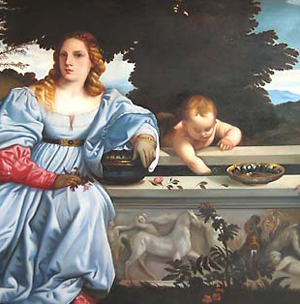
The French invasion of Italy in 1494 brought the ideals and aesthetic of the Italian Renaissance to France. This form of art and architecture reached its peak under the reign of François I, a true Renaissance prince who invited not only Cellini but also Leonardo da Vinci to his court at Amboise in the Loire Valley. The Renaissance lasted roughly from 1500 until 1630.
New political and social conditions encouraged aristocratic residences to be filled with sunlight, tapestries, paintings, and music. Adaptations of Gothic architecture, mingled with strong doses of Italian Renaissance, were applied to secular residences more suited to peace than to war. This is particularly evident at Azay Le Rideau, one of the loveliest of the Loire châteaux. Begun in 1518, its Italian influences are clearly visible, and it is obvious that this castle was built for pleasure living — not as a fortress to protect its inhabitants.
The artists of the School of Fontainebleau blended late Italian Renaissance style with French elements when redecorating the Château de Fontainebleau. Foremost among Renaissance châteaux in France is the Château de Chambord in the Loire Valley. Launched in 1519, it is the largest château in the Loire Valley and was the abode of the likes of Henri II and Catherine de Médici along with Louis XIII. Renaissance architectural features relied on symmetry and a sense of proportion, with steeply pitched roofs often studded with dormer windows projecting from their sloping roofs. Classical capitals such as Doric, Ionic, and Corinthian came back into vogue.

Tidak ada komentar:
Posting Komentar